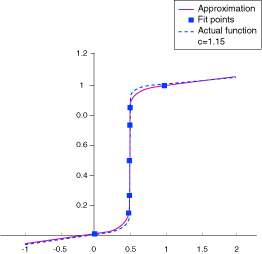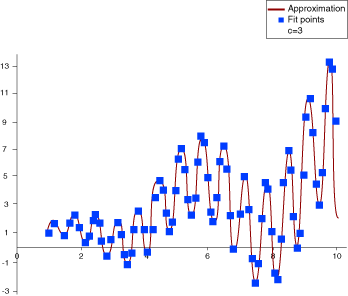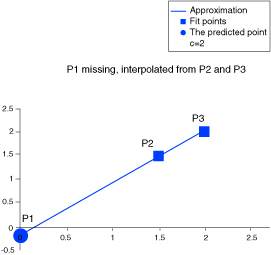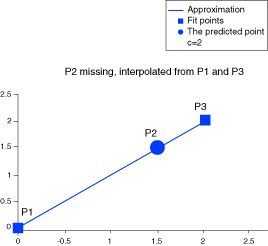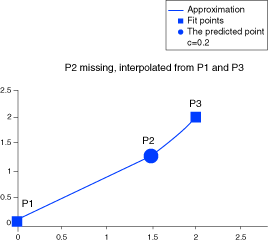Results Analytics follows the Hardy (1972, 1990) method as described by Kansa (1999).
Let be a given set of nodes. Let , be a set of any
radial basis functions. Here is the Euclidian distance given by . Given interpolation
values
at data locations
, RBF interpolant
is obtained by solving the system of linear equations
for unknown expansion coefficients .
Hardy, the primary innovator of the RBF Method, adds
a constant to the expansion and constraints the sum of the expansion
coefficients to zero as seen in Eqn 1 and Eqn 2, introducing the notation
, and .
We can rewrite the system (Eqn 2) in the matrix form as
Then the interpolation expansion coefficients are given by
You can easily find the derivatives of the interpolant at the nodes
. For example,
Because the physics of the model can vary, a different type of basis function
would be needed to provide a good fit. The response surface goes through
all the given interpolation data.
